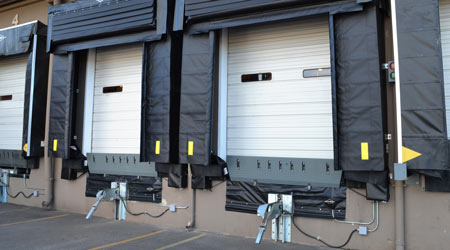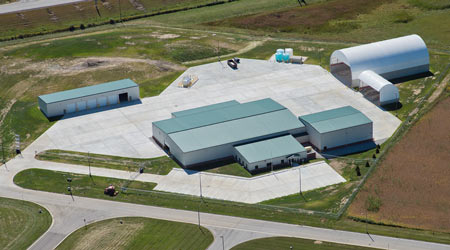
Loading Docks Seals Can Improve Energy Efficiency
May 25, 2016
Maximizing energy efficiency is an almost universal goal of facility managers overseeing commercial or industrial facilities. Most discussions have focused on windows, lighting, or HVAC. However, significant gains can also be made in an often-overlooked area – around the perimeter of loading dock openings.
Loading docks present multiple challenges to energy efficiency. For one, open doors create opportunities for heated or cooled air to escape the building. Without a proper seal, even closed dock doors may leave facilities vulnerable to this problem. When trailers are at the loading dock, gaps often exist between the trailer and the edges of the dock opening. Traditional swing-open trailer doors typically leave 1- to 2-inch hinge gaps running along both sides of the trailer, which equate to a 2.5-square-foot hole in the wall at each dock opening. Depending on your region, these unsealed gaps can cost up to $1,200 annually per dock position in lost energy.
But the sides of the dock opening aren’t the only gaps in the building’s perimeter. Many facility managers forget about the “fourth side” of the dock – the bottom end, where the leveler, trailer, and dock seal or shelter all meet. Depending on the size of the opening, that gap could result in another $200 to $900 lost annually.
To get a complete seal at the loading dock, start by looking for light along the dock door perimeter. Begin by standing on the inside of the dock when a trailer is in place and the dock door is opened. Examine the perimeter around all sides of the trailer and dock leveler and note areas where light is visible. Different gaps will need to be sealed by different products. Understanding what kinds of gaps exist will lead to more informed decisions on properly sealing them.
Getting a consistent, gap-free seal along trailer sides and top, as well as at the bottom of the dock door opening starts with a dock shelter that is specifically designed to overcome the most difficult sealing challenges.
At the sides, perimeter-sealing dock shelters offer full access loading since they seal along the side of the trailer, but unless the right model is selected, gaps often exist, especially in situations with swing-open trailer doors, as described above. The solution is a shelter with side curtains featuring a fabric-covered hook on the leading edge, which seals the trailer hinge gap.
At the top, gaps can be common when dock shelters use traditional fabric head curtains. A weighted, gravity-based design is essential for obtaining the tightest, most consistent seal across the full width of the trailer, allowing it to maintain contact as the trailer bounces during loading and unloading.
Facility managers can secure the “fourth side” of the dock by installing an under-leveler seal, which keeps debris and refuse out of the leveler pit and closes gaps that allow dust, dirt and insects into the building, and prohibits heated or cooled air from escaping the building.
This Quick Read comes from Mary Blaser is director of marketing and business development at Rite-Hite Environmental Enclosures Corporation. Read more about energy efficiency and the building envelope.
Next
Read next on FacilitiesNet












